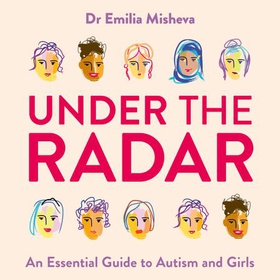
Legg til i ønskeliste
Under the Radar lydbok
296,-
What is the first thing that comes to your mind when you think of autism? Often, it's a boy who struggles with friendships, but who loves trains and is great at maths. While this may reflect the experiences of some autistic people, in recent years research and first-hand accounts have shown that many others don't conform to this image. The historical perception of autism as a "male condition" as well as simplistic stereotypes have led to an under-identification of autism in some girls and women…
Lydbok
296,-
Undertittel
An Essential Guide to Autism and Girls
Forlag
John Murray
Utgitt
18 juli 2024
Lengde
3:29
Sjanger
Dokumentar og fakta, Helse og livsstil
Språk
English
Format
mp3
DRM-beskyttelse
App-only
ISBN
9781399820868
What is the first thing that comes to your mind when you think of autism? Often, it's a boy who struggles with friendships, but who loves trains and is great at maths. While this may reflect the experiences of some autistic people, in recent years research and first-hand accounts have shown that many others don't conform to this image. The historical perception of autism as a "male condition" as well as simplistic stereotypes have led to an under-identification of autism in some girls and women - and, indeed, in all people, regardless of gender, who do not fit this mould.
This straightforward, one-stop guide introduces you to the differing presentations of autism that are common in girls, but also explores why referring to 'male' and 'female' autism is too reductive. Describing why some autistic girls' needs are identified late or not at all, looking at friendships and relationships, education, mental health and puberty, this concise, easy-to-understand and informative book draws on both lived experience and research to offer a popular science overview of this important topic.
This straightforward, one-stop guide introduces you to the differing presentations of autism that are common in girls, but also explores why referring to 'male' and 'female' autism is too reductive. Describing why some autistic girls' needs are identified late or not at all, looking at friendships and relationships, education, mental health and puberty, this concise, easy-to-understand and informative book draws on both lived experience and research to offer a popular science overview of this important topic.






